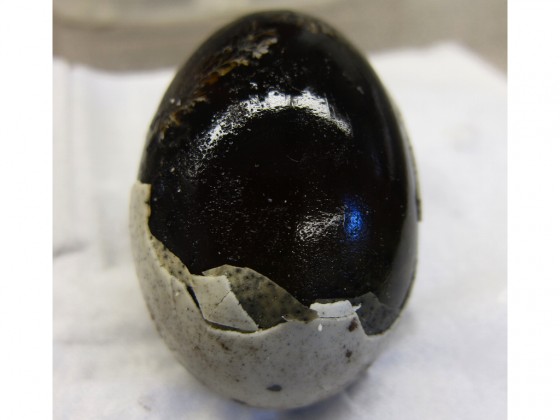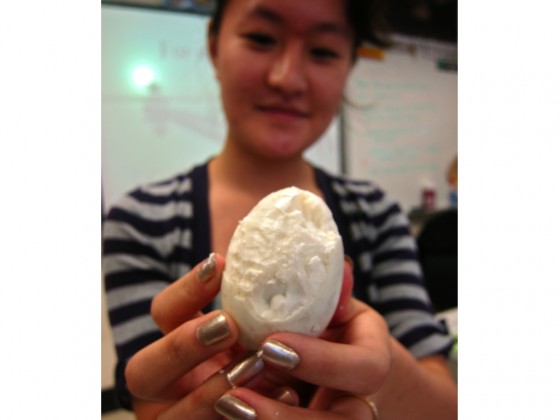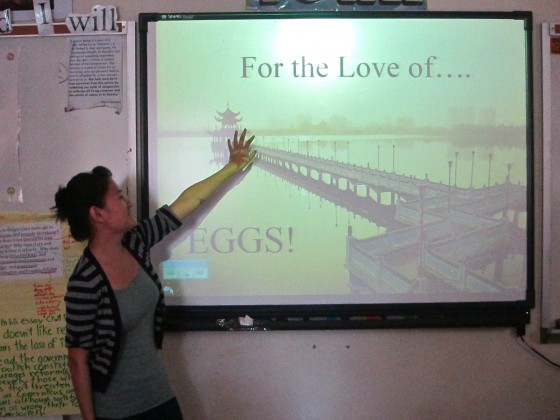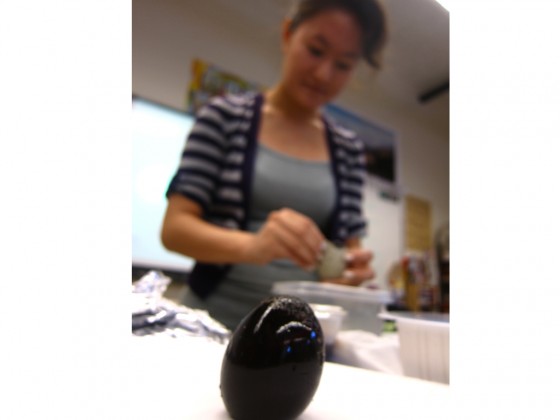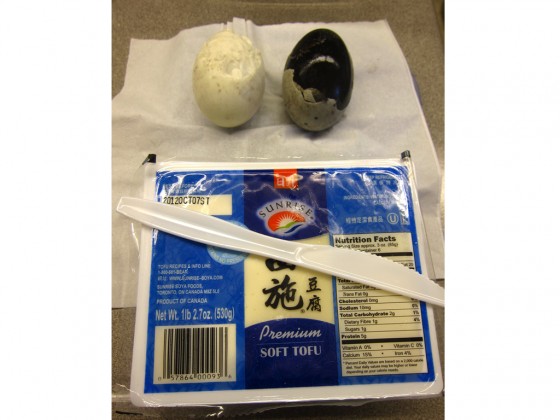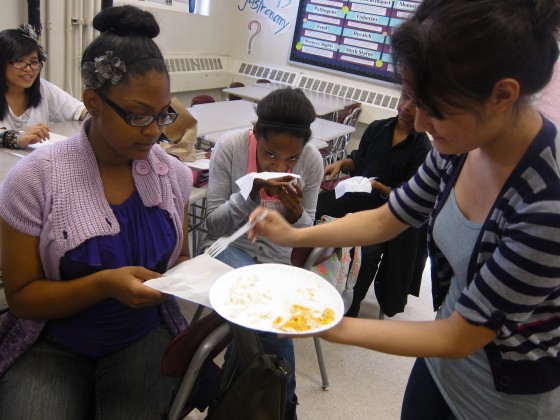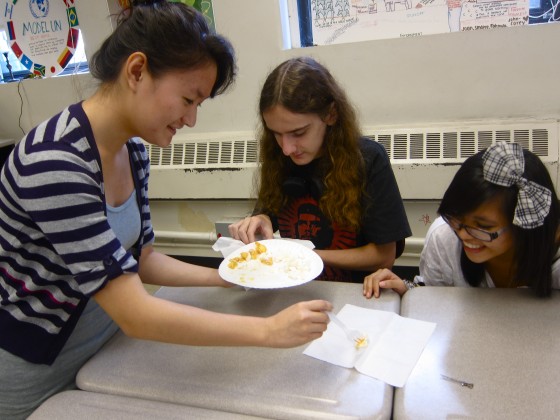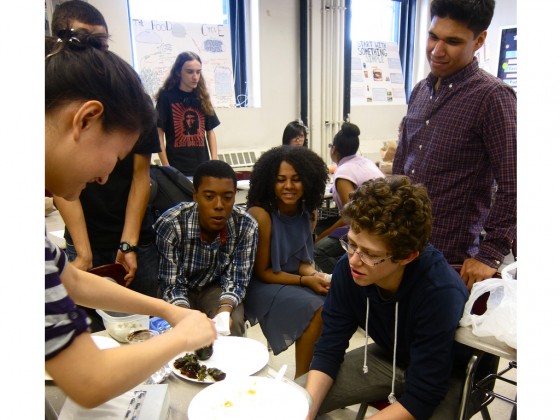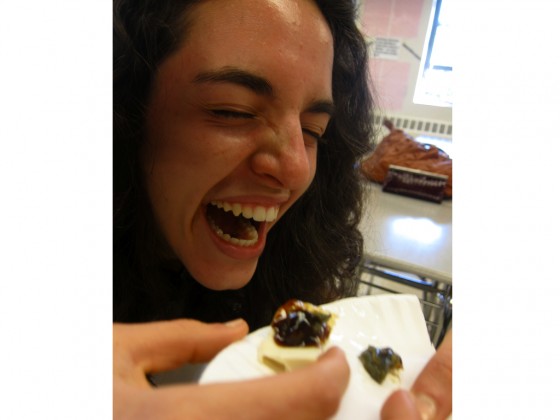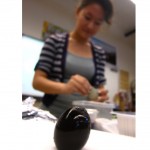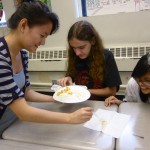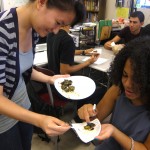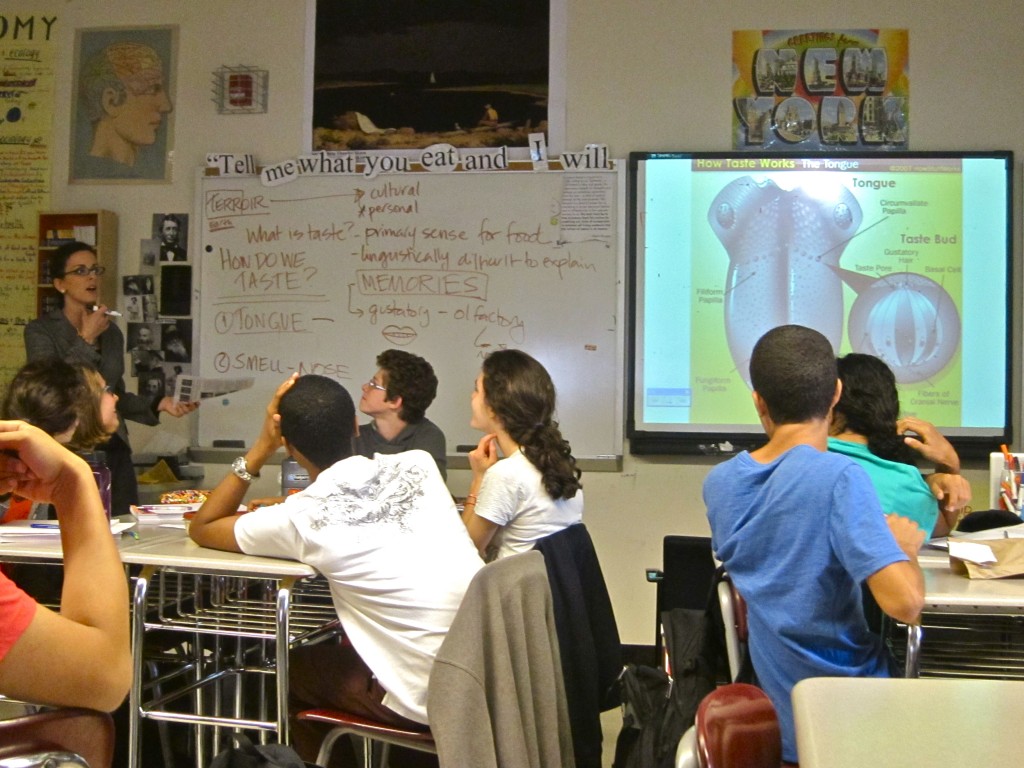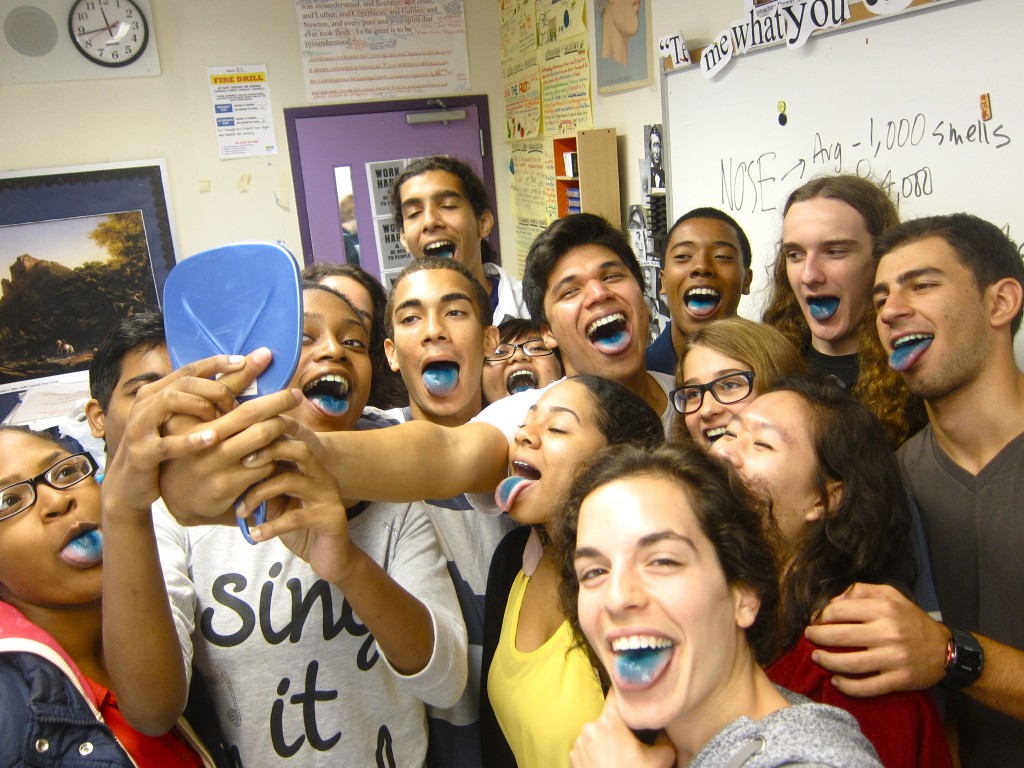Classes started two weeks ago and my days shifted from a summery drawl to a dizzying whirlwind. July and August passed and I can count on one hand the number of times I heard my last name spoken out loud. September welcomed a barrage of “Ms. Boylans!” “Ms. Boylan, will this be on the test?” “Ms. Boylan, I couldn’t print the homework .” “Ms. Boylan, can we go outside?” I think there’s a meme out there with the typical *things* students say and for the most part, my kids are no different.
In Gastronomy, though, I get a break from the typical. It’s not uncommon to hear, “Ms. Boylan, what’s a truffle?” “Ms. B. Can we try oysters?” And a classic: “Ms. Boylan, if a cow eats chocolate, will the milk taste like chocolate?” So on the first day, I asked some of my own questions as a way to get to know them better. This particular exchange did not disappoint:
Me: So Gilberto, what was the best thing you ate this summer?
G: When I visited my family in Mexico I had a dish called Posole. It’s a soup with corn and meat, usually chicken, but we had it with rabbit. I got to kill a rabbit for the meal.
Me: Oh wow, really? How did you slaughter the rabbit?
G: With a shotgun.
Me: Huh. That seems a little assertive, no?
G (reassuringly): Well, no, it was close range.
Next I posed the same question to Alex. “A fried Twinkie,” he said. And so the semester began.
My husband says my classroom looks like a Benetton ad, so I love to start the semester by asking where the students are from and what they like to eat. This year they shouted out dishes they’re likely never to see in the school cafeteria (unfortunately): oyster omelettes from Taiwan, Oil Down from Carriacou and Iraqi-Jewish Tabeet.
One student added, “If I was stuck on a dessert [sic] island, I wish that I would have lamb chops.” If I were on a dessert island, I might go for the pecan pie, but I’m never one to spit on lamb chops. And I suppose if I’m on a desert island, I couldn’t be so picky.
And before they left on that first day, I asked them to jot down their definition of Gastronomy to gauge their familiarity. Oftentimes students choose the class because of the tastings or field trips. And while I imagine these perks still draw kids, this group’s answers revealed a greater awareness of the issues we will study. Tammi wrote, “Gastronomy is the study of food. Where it comes from, how it is produced, is it sustainable, it’s country/region of origin, how it gets to the market. Expand your taste buds!” Ilan succinctly defined it as, “the study of the production, transportation, eating and waste of food.” This makes me hopeful that students are exposed to these issues more than they were even four years ago. At the very least maybe they’re talking about it within our school’s walls. Chances are it’s a bit of both.
Given the recent press about Mayor Bloomberg’s proposed ban of soft drinks or the mainstream release of films like, Food, Inc., kids seem to be more aware that problems exist in our food system. Yemi hopes to learn, “the pros and cons of eating organic food and where and how our food is treated before it reaches the plate.”
And sometimes their honesty is disarming. When asked what he hopes to get out of this class, Brandon wrote, “A life changing experience, that will educate me on a topic I’m ignorant on.”
I sure hope so, Brandon.
****************************************************************
If, like me, you’re curious to know where all the kids and their families are from and their favorite dishes, here’s the list of responses:
-“My family is from the Philippines. My favorite dish dessert wise is cuchinta with coconut shavings, and meal wise is either horseshoe radish with sardines and tomatoes.”
-“I was born in the Bronx and my family is from the Dominican Republic. I like fried platano with fried salami.”
-“Colombia. Bandeja Paisa” (If you’re like me and don’t know what this is, check this link.)
-“My family is from Puerto Rico. White rice and black beans with fried chicken cutlets.”
-“Albania. It is a dish that is layered with dough and can have either spinach, or meat, or cheese within the layers of dough.” (He’s talking about one of my favorites, too: burek.)
-“I was born in the U.S. My father’s family is from Israel. Hummus. I constantly eat it on bread.”
-“Iraqi Jewish and Russian Jewish. Tabeet: Chicken baked in rice mixed with tomato sauce. Spices: cinnamon, others (?), cardamom (?). Delicious! Put eggs on top for the day later!”
-“Dominican Republic. Rice, beans, and meatballs.”
-“100% Dominican Republic. Platano maduro, queso de freir and fried egg and salami.”
-“My mom is Italian and Irish and my dad is from Belgium. Eggplant Parm, which my mom and grandma make.”
-“Ireland and Sicily. Fried calamari or just calamari from my Italian side.”
-“Taipei, Taiwan and Gaishang, Taiwan. It would have to be between stinky tofu and oyster omelette… and xiao long boa: #1 Favorite (maybe).”
-“I was born in the U.S. but upon 3 months of my birth I was brought to my parents’ birth place: Beijing, China. I like to consider myself of Chinese origin. I love my mom’s homemade fried rice. It is both heavenly and healthy. Cooked with carrots, peas, beans, corn, ham, sausage, white rice and just the right amount of salt, pepper and a dash of red chilli pepper. It is the absolute perfect dish that I can’t live without.”
-“My family comes from the central part of Mexico. My favorite dish is something called chiles rellenos. ‘Stuffed Peppers’ is the translation.”
-“My mom and I were born in NY, in fact in the same hospital. Her father was born in Costa Rica and her mom was born in sweet home Alabama. My dad and his mom were both born in Haiti. Weird mix, huh?! Hmm… I don’t think it’s a culture thing, but I like steak with yellow rice and veggies. Pastas are also my fave! (I also like salads.)
-“My family has been in America for about 150 years, but before that was mostly from France. Tarte Tatin, a caramelized apple tart.”
-“My mom is from the Caribbean and my dad is from Nigeria. My favorite dish would have to be Oil Down. It’s made from naturally oily food like pig and other Caribbean dishes/ingredients. It can be made with almost anything.”
-“I was born in UAE, but I moved to Bangladesh when I was 5 and have been living there till my freshman year, when I moved to the States. My favorite dish would be this dessert called “Fhalada”. The dessert is prepared with jello, mixed with milk and custard, and lychee jelly, and on top of that with ice cream and syrup.”

